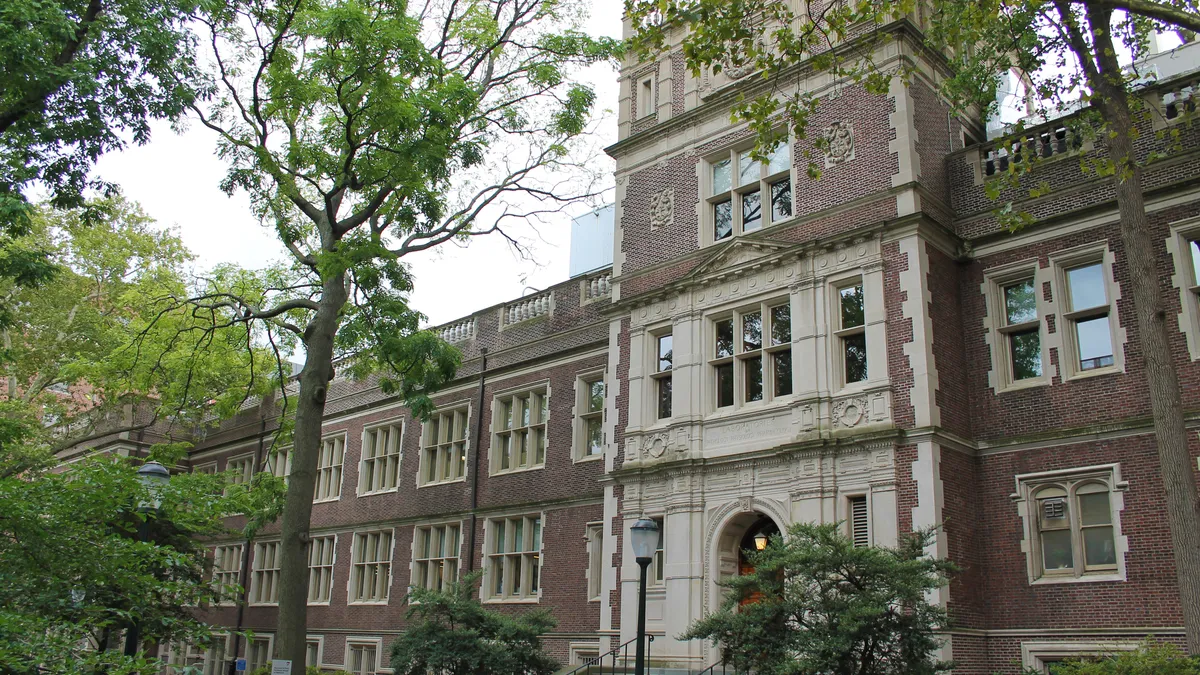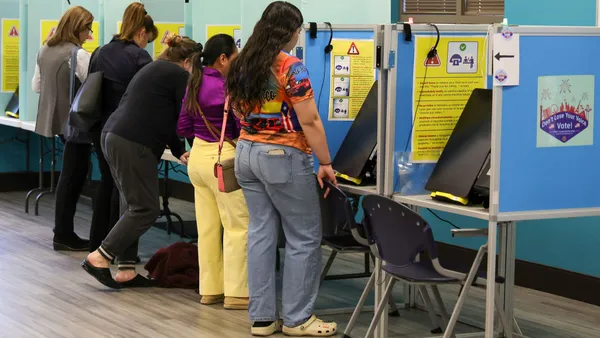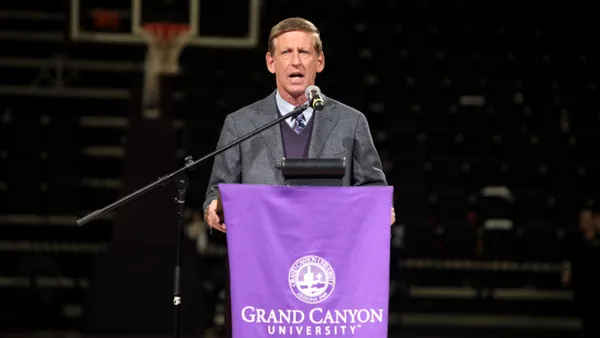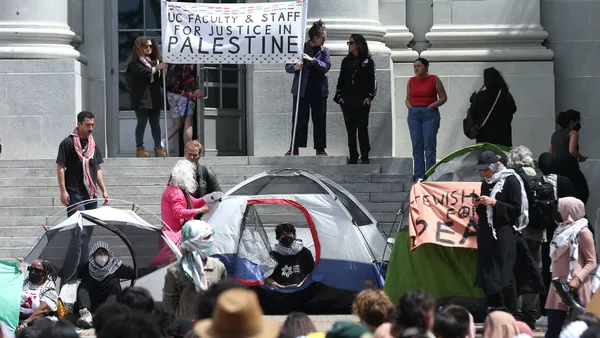Dive Brief:
- The U.S. Department of Education on Monday announced a new experimental site that will expand how institutions can use Federal Work-Study (FWS) funding for off-campus employment, such as internships, apprenticeships and externships.
- The pilot will remove limits on the amount of FWS funding an institution can allocate to private-sector employers, reduce small businesses' wage-share terms to that of nonprofits, and let institutions pay students for required employment experiences, such as clinical rotations and student teaching.
- It also will increase Job Location and Development program funds to participating colleges and allow them to hire companies to help identify and vet apprentices, develop training materials, assess performance and generally ensure classroom and on-the-job learning are aligned.
Dive Insight:
The announcement follows calls from across higher ed to change the FWS program, which was developed more than 50 years ago to give low-income students work experience and help them pay for college. The program divides its roughly $1 billion in annual funding based on how long an institution has participated in the program, as well as on students' demonstrated need.
Despite its noble intentions, though, some say the program is not making good on them. A recent analysis of FWS by the Urban Institute found the awards tend to skew toward higher-priced schools and to students from wealthier families.
Additionally, its allocation does not reflect that of a common measure of need: Pell Grants. While public two-year institutions received 34% of Pell Grants, they captured just 18% of FWS funds in the 2016-17 academic year, according to the analysis. That's compared to private nonprofit colleges, which received 41% of FWS funds and 16% of Pell Grants.
Other criticisms of FWS include that the jobs don't match students' professional or academic goals, and that limits on how much participants can earn from the program are insufficient and inconvenient for students who have financial responsibilities beyond campus. What's more, students from two-year public colleges tend to put in longer hours than students from private nonprofits, according to a recent report from NASPA-Student Affairs Administrators in Higher Education.
NASPA offers several recommendations for improving on-campus student employment. Among them are simulating typical hiring and onboarding processes, offering more resources for supervisors, and developing frameworks to show what students will learn on the job and how that connects with their classroom experiences.
The program has also been criticized for its limits on institutions using FWS funds to subsidize student employment with private, for-profit companies, capped at 25% of a school's initial annual allocation. Institutions can use federal funds to subsidize as much as 90% of student wages at nonprofits.
The Ed Department's pilot also reflects calls by the Trump administration to overhaul FWS and invest more in apprenticeships. It will measure factors such as retention and completion, student satisfaction, borrowing, employment outcomes and the development of workforce partnerships.













